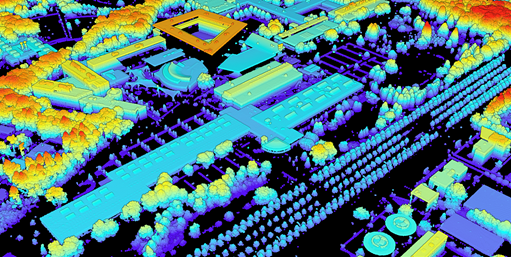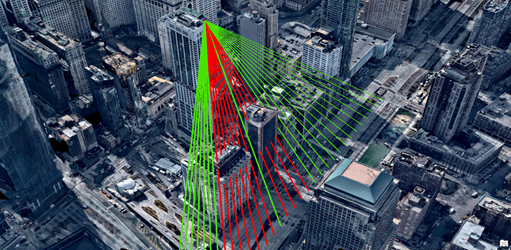Available with 3D Analyst license.
The ArcGIS 3D Analyst extension in ArcGIS Pro provides tools for accomplishing robust work with GIS data in a three-dimensional (3D) context. It allows you to create and conduct 3D analysis using many types of 3D data, such as 3D points, 3D lines, 3D polygons, point clouds, multipatches, TINs, terrain datasets, and rasters. You can create, import, and convert 3D data between different formats, and analyze surfaces and 3D feature data together to better understand your environment in a 3D context.
Using the ArcGIS 3D Analyst extension, you can perform analysis and tasks such as the following:
Point cloud management and analysis
Leverage an array of tools for classifying, converting, analyzing, and managing point cloud data.

- View, manage and analyze lidar and other point clouds in LAS format natively and as a collection of files in a LAS dataset.
- Use deep learning to classify point clouds for specific real-world features, or use one of the purpose-built classification tools to classify buildings and ground.
- Edit point classification of lidar data using geoprocessing and interactive tools. For example, use profile viewing to manually classify selected points.
- Use the interactive selection tool to select and classify powerlines quickly and efficiently in a 3D scene.
Surface generation and analysis
Generate surfaces for analysis using TINs, terrain datasets, LAS dataset, and rasters.

- Use engineering-quality TINs for demanding, high-accuracy applications such as construction and volumetrics.
- Create a terrain dataset from 3D points and breaklines to update and maintain a surface over time using enterprise-level geodatabase technology.
- Produce DEMs that include proper enforcement of water features like lakes and rivers.
- Create of surface derivative products, such as slope, aspect, and contours.
- Delineate floodplains for flood management, mitigation, and insurance assessments.
Visibility analysis
Analyze visibility to derive useful interpretations of 3D data.

- Build shadow models of buildings to assess right-to-light conditions and to better understand the impact of shade throughout a city.
- Evaluate protected viewsheds to assess the impact of proposed construction projects.
- Conduct direct line-of-sight analysis for high-speed wireless digital networks.
- Use a suite of skyline analysis tools to visually compare how much sky an observer point can see and the possible obstructions for a viewpoint.
Spatial relationships between features in 3D
Perform distance-based evaluations of 3D points, point clouds, lines, and multipatch features.

- Identify lidar data within the three-dimensional proximity of powerlines to understand vegetation encroachment.
- Use solid modeling tools to perform union, dissolve, and intersect between 3D volumetric features for mining applications.
- Construct a fence diagram, which is a vertical cross-section of a collection of surfaces, to understand 3D subsurface data.
Volumetric analysis
Calculate the surface area and volume of spaces in 3D data.

- Calculate volumes for earthwork such as construction and dredging.
- Assess the volume of material in a stockpile.
- Model the space between subsurface geological strata.